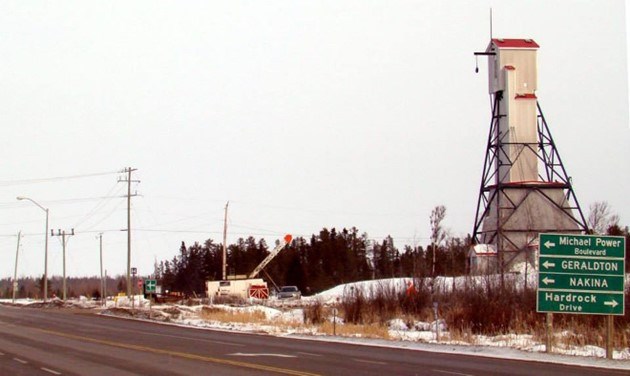A decision by the Ontario Energy Board (OEB) has corrected a “historical barrier” toward delivering power to new mines and mills in northwestern Ontario, said Common Voice Northwest, a grassroots public policy research entity.
For years, Common Voice’s energy task force has been lobbying the province and the OEB to change the assignment of costs for the upgrading of distribution and transmission lines to more of a “fair share approach.”
In a Feb. 15 news release, Common Voice said the OEB announced a number of cost allocation changes that the energy task force identified to reflect the economic needs of the region.
“Recently, Greenstone Gold tried to get the transmission line that connects the Municipality of Greenstone upgraded to power the new mine (south of Geraldton) but was told they had to pay for 100 per cent of the cost of the upgrade to replace the existing service for the community as well as increase the capacity required by Greenstone Gold,” said task force co-chair Iain Angus in a statement.
“The high cost of this overall upgrade, which would benefit the entire Greenstone Area, including First Nations, was so excessive that Greenstone Gold determined that it was more cost effective to construct its own gas fired generating station instead.”
The energy task teamed up with the Northwest Associated Chambers of Commerce and the Northwestern Ontario Municipal Association to engage the legal firm of Weilers Law to represent the region before the OEB as part of a lengthy review of the Transmission and Distribution System Code.
Wendy Landry, chair of Common Voice Northwest and president of the Northwestern Ontario Municipal Association (NOMA) added these changes moves the region’s economy forward by reducing the investment to get new mines and mills operating.
“This is a classic example of the significant research conducted by the Energy Task Force, led by its co-chairs Iain Angus and Larry Hebert, that has led to yet another major change in government policy. It also reflects the legal expertise of Weilers Law in taking these and other energy matters to the Ontario Energy Board," she stated.
The following are the specific changes announced by the OEB:
• Where a transmission connection investment also addresses a broader network system need (e.g., reliability), the costs associated with such investments would be apportioned between the load and/or generator customer(s) that caused the need for the connection investment and the transmission network pool (i.e., all ratepayers), based on the proportional benefit between the connecting customer(s) and the overall system
• A capital contribution would be required from embedded distributors and large commercial and industrial (C&I) load customers of distributors, where they cause and benefit from investments in upstream transmission connection facilities, based on their incremental load requirements.
• Where a connection asset requires replacement at its end-of-life (EOL), the Codes would be modernized to reflect that wires replacement would need to be determined to be the optimal solution. Where that is the case, cost apportionment between a load customer and all ratepayers[1] would differ based on the circumstances as follows:
- Where the replacement is the same capacity (i.e., like-for-like) or right sized to lower capacity, the customer would not be responsible for any replacement costs
- Where the replacement involves an upgrade, the customer would be responsible for only the incremental cost; i.e., the amount that exceeds the cost of a like-for-like replacement – not the full cost
• Where the customer requests replacement before EOL, the amount the customer would be responsible for would be limited to the remaining net book value and the advancement cost – not the full cost
• A regional distribution solution would be facilitated, where more than one distributor is involved and it would avoid a more costly upstream transmission connection investment, so that the most cost effective wires investment in a regional infrastructure plan (RIP) can be implemented
• Where a distributor is required to pay a large lump sum capital contribution to a transmitter in relation to a transmission connection investment, the distributor would be permitted to spread the cost by providing the capital contribution in installments over five years (or longer, with OEB approval)
• Other changes involved proposed amendments to address inconsistencies between, and gaps within, the Codes. The proposed changes focused primarily on aligning the DSC with the TSC. Key considerations include improving alignment with the beneficiary pays principle, consistent treatment of customers across the numerous distributors in Ontario and the evolution of the distribution system (as the functions it performs are becoming more similar to those of the transmission system).




